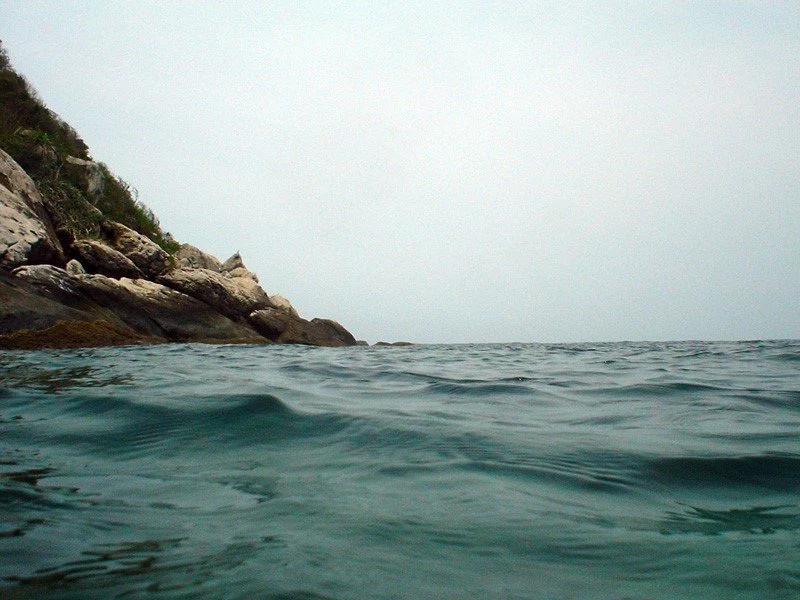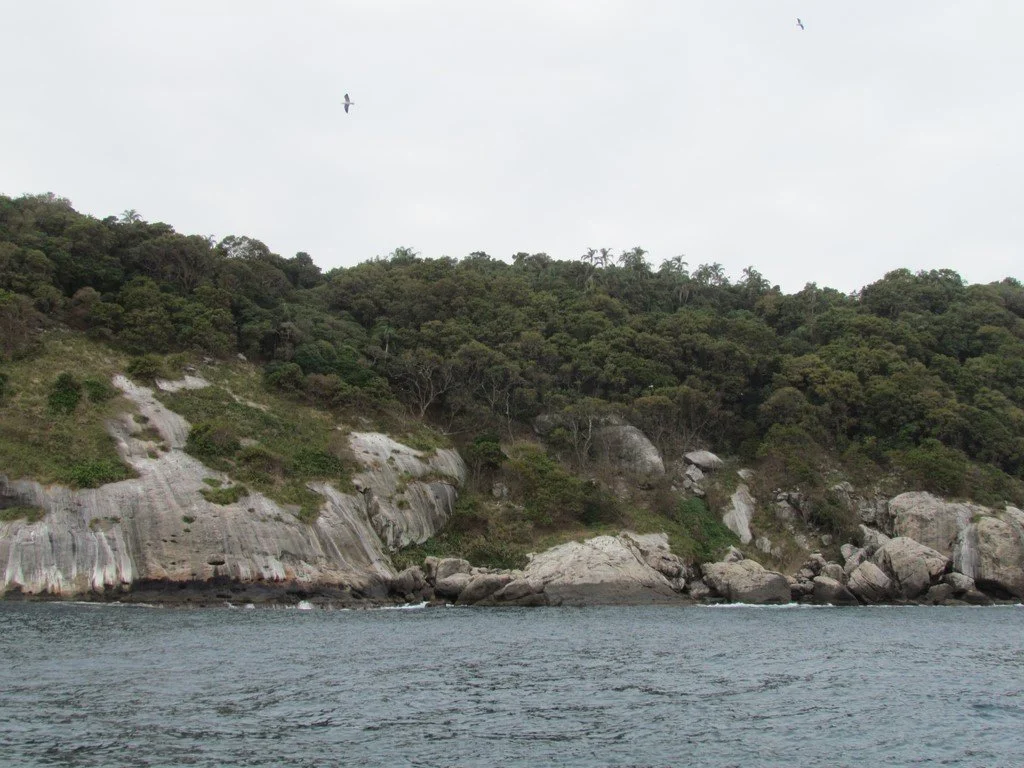Queimada Grande Snake Island is a small piece of land in the south of the Brazilian state of São Paulo, located in the warm waters of the Atlantic Ocean. This elongated island is considered one of the most inhospitable and dangerous places on the planet. Queimada Grande is dominated by poisonous snakes and has the status of the largest natural serpentarium in the world.
 |
| Snake Island |
Basic Moments
The snake island of Queimada Grande has an area of 43 hectares and rises to 200 m above sea level. It is covered with lush vegetation and is uninhabited. There is not a single hotel and restaurant here, and only a lone white lighthouse on the shore reminds that people once lived on the island. Brazilians are wary of Queimada Grande and call it the "Island of Death". Some do not even dare to swim up to its shores, let alone land on the island itself.
 |
| Snake Island |
Queimada Grande is home to one of the most venomous snakes on the planet - the island botrops or spear-headed snake, which belongs to the viper family. The territory of the snake island of Queimada Grande is literally teeming with reptiles, and their population reaches 5,000 individuals. It is noteworthy that spear-headed snakes live only on this Brazilian island, that is, they are endemic.
The Brazilian authorities have endowed this piece of land with the status of a natural reserve and introduced an official ban on visiting the island for local residents and tourists. However, even without this prohibition, there is no one who would dare to risk his life for the sake of new impressions and experience. The snake island of Queimada Grande is considered one of the most unusual nature reserves on the planet, the history of which is overgrown with tragic legends and rumors.
Because of the real threat to life and health, travelers are only brought to the coast, but they are not landed on the island itself. In addition to tourist and pleasure boats, fishermen and divers can often be found near Queimada Grande. Once a year, Brazilian military personnel land on the island to carry out maintenance work on the lighthouse.
 |
| Snake Island |
Legends of Queimada Grande
There are many legends about the snake island of Queimada Grande. One of them tells about sea pirates who once landed on a green island in order to hide their treasures among the rocks. Pirates released several snakes onto land to protect the treasure from strangers. Gradually, the snakes multiplied, took possession of the entire island and made it very dangerous for people.
Another legend tells of an unlucky fisherman who, hungry, moored ashore to soak up the sun and eat exotic fruits. As soon as the fisherman set foot on the island, he was bitten by a poisonous snake. The unfortunate man had only enough strength to get to his boat, where he died. Then, when other fishermen sailed past the island, they found a boat with a corpse, which was rocking near the shore on the waves of the sea.
The third legend tells of the island lighthouse keeper and his family, which consisted of his wife and three daughters. At night, while people were fast asleep, many snakes climbed into their dwelling through the windows. The frightened caretaker and his loved ones fled in horror to the nearest forest, but were attacked by snakes and died from snake bites. Later, the military moored to the shore of the island and found their bodies. Since that time, the lighthouse on Queimada Grande has been redesigned and switched to automatic mode of operation, which does not require the constant presence of people.
Brazilian businessmen who wanted to establish banana plantations on it tried to settle in the island. The workers hired by them tried to burn the forest and bushes, but the snakes bit people, and they were forced to leave for the mainland. In any case, the victory on the snake island of Queimada Grande has always been for the reptiles.
Today, only herpetologists dare to visit these inhospitable places, but they also have to be very careful and take all security measures to avoid snake bites. The Brazilian government requires that every scientific expedition must have a doctor who can provide medical assistance to the victim.
Snakes
The venom of spearhead snakes is so strong that after a bite it can dissolve human flesh. It leads to severe gastrointestinal bleeding, rapid tissue necrosis, acute renal failure and cerebral bleeding. Unfortunately, any antidotes against such a strong poison are ineffective. In 7% of cases, the bite of the island botrops in humans is fatal, and the mouse, after meeting with the snake, dies within 2-3 seconds.
Island botrops have a massive broad head and reach sizes of 0.7-1 m, rarely growing to 1.18 m. They feed on other snakes, lizards, frogs and centipedes. In addition, spear-headed snakes kill migratory birds, which, unaware of the danger, sit down to rest on tree branches and rocks. From a snake bite, the bird dies almost instantly, without even having time to take off. It is believed that the venom of island botrops is so strong because they cannot find enough food on the island.
 |
| Snake Island |
Spearhead snakes can be seen everywhere on Queimada Grande. They lie in balls on the sand, inhabit the rocks hanging over the sea and crawl from tree to tree in search of food. There are so many reptiles under the canopy of the forest that a quiet rustle is constantly heard in the island forest. Whisper-like sounds are made by hundreds of crawling snakes. The reason for such a large number of snakes is the lack of natural enemies. There are no predators on the island that could restrain the growth of the snake population.
Almost all spear-headed snakes spend most of their lives on trees and undersized shrubs. Reptiles like to hide in foliage, so they can be difficult to spot even at close range. But it is very easy to provoke aggressive behavior by accidentally hitting a branch with your hand or stepping on a snake in the grass.
How to get there
The snake island of Queimada Grande is located 35 km from the mainland. Tourist boats to the island go from the seaside town of Santos, which is connected by bus to the major Brazilian city of Sao Paulo.
